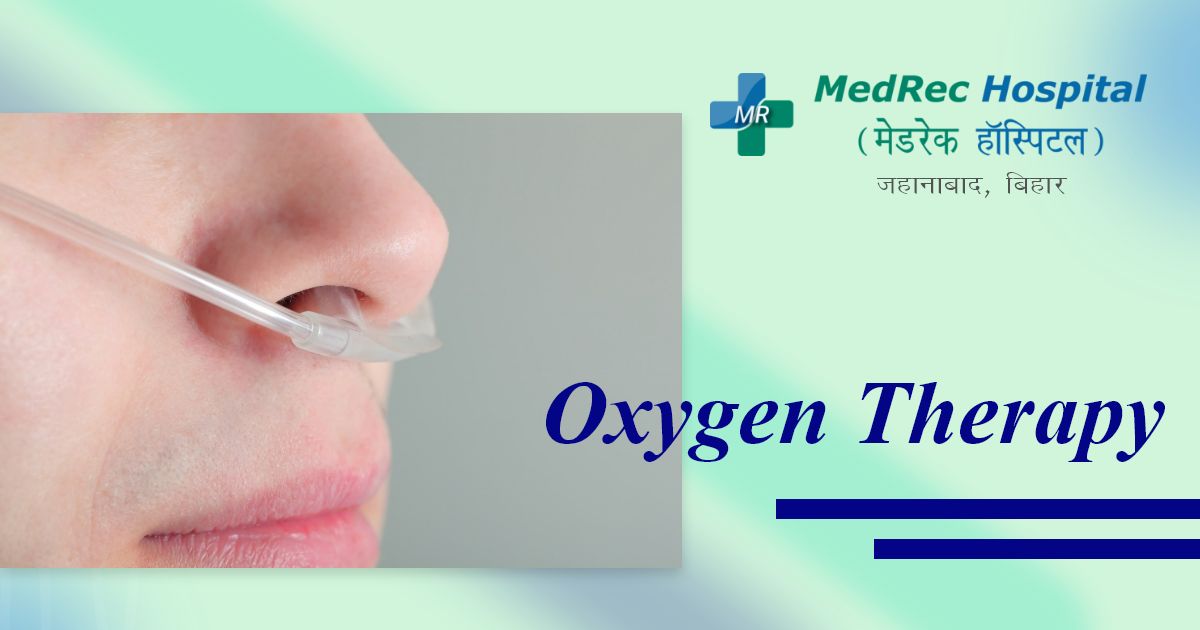
Oxygen Therapy : Why is it done, Preparation And Results ?
661
Purified oxygen is breathed in a pressured atmosphere during hyperbaric oxygen treatment. Decompression sickness, which can occur when scuba diving, has a well-established treatment in the form of hyperbaric oxygen therapy. The following other disorders are treated using hyperbaric oxygen therapy:
- Significant infections.
- Air bubbles in the blood vessels.
- Wounds that may not heal as a result of radiation or diabetes.
The air pressure is two to three times higher than usual in a hyperbaric oxygen treatment room. In these conditions, your lungs can absorb a lot more oxygen than they could if you were breathing pure oxygen at normal air pressure.
By providing more oxygen, microorganisms may be fought. Additionally, it stimulates the generation of stem cells and chemicals known as growth factors, both of which promote healing.
Why is it done?
The tissues in your body require enough oxygen to operate properly. Even more, oxygen is needed for the tissue to survive when it is wounded. Your blood may transport more oxygen thanks to hyperbaric oxygen therapy. Due to the briefly high oxygen levels, repeated treatments encourage normal tissue oxygen levels even after the therapy is finished.
With the use of hyperbaric oxygen therapy, several medical conditions are addressed. It is used by medical facilities in a variety of ways. If you have one of the following conditions, your doctor could advise hyperbaric oxygen therapy:
- Acute anaemia.
- Brain abscess.
- Air bubbles are known as arterial gas embolisms that form in your blood arteries.
- Burns.
- Poisoning from carbon monoxide.
- Crushing harm
- Abrupt hearing loss
- The decompression illness.
- Gangrene.
- A skin or bone infection that kills tissue.
- sores that do not heal, like a diabetic foot ulcer.
- Radiation damage
- Skin flaps or grafts are susceptible to tissue death.
- Brain damage caused by trauma.
- Suddenly occurring, painless vision loss.
Risk Factors
The use of hyperbaric oxygen treatment is often risk-free. Rare complications do occur. There is considerable danger involved with this therapy.
Risks that may exist include:
- Damage to the middle ear is caused by variations in air pressure, such as fluid leakage and eardrum rupture.
- Myopia, or temporary nearsightedness, is brought on by transient alterations in the eye's lens.
- Barotrauma, or lung collapse brought on by variations in air pressure.
- Seizures are brought on by oxygen toxicity or too much oxygen in your central nervous system.
- Reduced blood sugar levels in diabetics receiving insulin treatment.
- Due to the oxygen-rich atmosphere of the treatment chamber, burns may occasionally occur.
Preparation
For the procedure, you will be given a hospital-approved gown or scrubs to wear in place of ordinary clothing.
Lighters and other heat-producing objects powered by batteries are not permitted inside the hyperbaric chamber for your protection. Petroleum-based hair and skin care products may also need to be removed because they pose a fire risk. You will receive instructions from your medical team on how to get ready for hyperbaric oxygen therapy.
During Procedure
Although hyperbaric oxygen treatment is normally administered as an outpatient operation, it can also be given while you are being treated in a hospital.
There are primarily two kinds of hyperbaric oxygen chambers:
A setup intended for just one person. You lie down on a table that glides inside a transparent plastic chamber in an individual unit. An example of a monoplace unit is this.
A space created to accommodate several individuals. Typically, a multi-person hyperbaric oxygen chamber resembles a sizable hospital room. During treatment, you are free to sit or lie down. You can get oxygen by wearing a face mask over your face or a thin, transparent hood over your head.
The advantages of hyperbaric oxygen therapy apply whether you receive it alone or with others.
As part of treatment, the air pressure in the room is around two to three times greater during therapy. Your ears will experience a brief sense of fullness due to the increased air pressure. You could experience something like this while flying or at a high altitude. You can get rid of the sensation by swallowing or yawning.
Hyperbaric oxygen treatment lasts for around two hours for the majority of illnesses. Members of your healthcare team will monitor you and the therapy unit during your treatment.
After Procedure
Your treatment team will follow up with you following your appointment. A team member could check your ears and take your pulse and blood pressure. Your blood glucose level is examined to see if you have diabetes. You can get dressed and depart as soon as the staff determines you are ready.
Immediately after your treatment, you could feel a little hungry or sleepy. Activities are not restricted by hyperbaric oxygen treatment.
Results
You will probably need more than one session of hyperbaric oxygen therapy to see its benefits. Your medical condition will determine how many sessions you will need. Treatment for some illnesses, such as carbon monoxide poisoning, may need three visits. Other conditions such as wounds that do not heal, can need 40 treatments or more.
Hyperbaric oxygen therapy is often a component of a comprehensive treatment strategy to effectively treat recognised medical disorders. This regimen may also involve additional treatments and medications made specifically for you.
For further information please access the following resources:
Emergency : +91 89686 77907
Front Desk : +91 98018 79584
Page last reviewed: Mar 20, 2023
Next review due: Mar 20, 2025







.jpg)
.jpg)
.jpg)
.jpg)
.jpg)
.jpg)